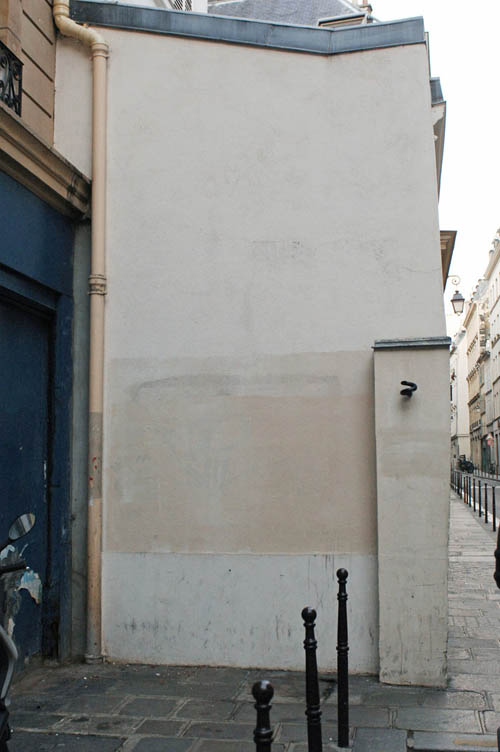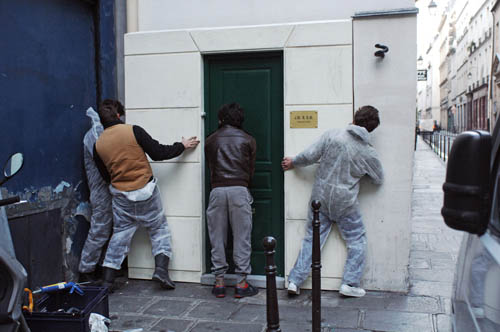[A] definition [that] was written to speed up the process of creating a contour model while limiting the amount of waste generated during the fabrication of the physical model. An interface was developed within Grasshopper where all of the important settings can be controlled, allowing those who know little about grasshopper to still use the definition. A base surface is supplied to grasshopper, which then scales the surface, cuts the cross sections according to the contour step size, then orients the cross sections to the XY plane.
contour
The Grasshopper Contour Tool is:
nothing to worry about
This was supposed to be a long post. But I decided to shorten things up a bit and deliver some fishing canes instead of the actual fish - which basically means there will be loads of links.
This video for Peter Bjorn and John's Nothing To Worry About shows a day in the life of a very interesting guy. It was directed by Andreas Nilsson and Filip Nilsson [2]. I like the simple observation documentary style.
Whether seen as macho to a humorous fault or just so cool we can’t keep up, the dancers in Yoyogi Park have been at this for years. I’ve seen surprisingly little information on this subculture; everyone has videos and photos, but what makes these guys tick? Do they ever get young people to join? What is their official nomenclature? Will they die out? Do they care? in Japan Probe
They seem to be called “Rollers” (ローラー) [like rock n'rollers] and should not be confused with the Takenokozoku "who were active at the same time in the late ’70s/early ’80s. On the yankii side of things, but not necessarily straight up bosozoku. Came out of the big Fifties revival at the end of the ’70s. Died off later in the ’80s, but the original guys — pushing 50 in some cases — are still out there once in a while." in Japan Probe
Learn more about the modern subcultures that originated all of it:
The Rocker
The Teddy Boy
The Greaser
The Mod
berthier's door
The story of how a fake door became real, no questions asked, to the city of Paris. Read in BLDGBLOG.
Harvey Zeitgeist
The logic of capital accumulation and class priviledge through hegemonic, can never control every nuance of urbanization (…). David Harvey - New Urbanismand the Communitarian Trap. In Harvard Design Magazine Nº1 (1998).
Strangely this is the same message of Zeitgeist Addendum.
Also hear and "see" David Harvey on the Crisis of Capitalism:
Geographer and sociologist, David Harvey wrote: Justice and the City (1973), The Condition of Postmodernity (1989), Social e Spaces of Hope (2000).
narrow my streets
David Yoon is a photographer, "writer, designer, and urban planning geek" - he says it himself. He creates, in his blog, a what if? universe centering on Los Angeles. He envisions and visualizes how LA would look like if its streets were narrower. Hence the appropriate name: narrow streets: los angeles.
And without further ado, I present thee the concept of UCHRONIA.
In the words of Foucault "Fist there is Utopia". Borrowing from Harvey, talking about Moor's Utopia or Bacon's Atlantis, "[all] these forms of utopia can be characterized as 'Utopias of spacial form' [in opposition to 'Utopias of social process'] since the temporarily of the social process, the dialectics of social change - real history - are excluded, while social stability is assured by a fixed spacial form."
If, one considers time in the same sense as process, one would feel tempted to say that "utopias of social processes" are essentially Uchronias. But, again, Harvey explains that, in the later case, the qualities of space and place are totally ignored".
Then, Uchronia has the same sense as utopia of temporal play, because instead of suspending time in favor of space, it suspends space in favor of time. Makes sense? It does, so as one acknowledges that any social process has effects both in time and place. It should be noted that these all are to be treated as "ideal types". So, what if, in opposition to utopias of social process, we were to group utopias of spacial AND temporal play? Now, what DOES David Harvey think of this?
And without further ado, I present thee the concept of UCHRONIA.
In the words of Foucault "Fist there is Utopia". Borrowing from Harvey, talking about Moor's Utopia or Bacon's Atlantis, "[all] these forms of utopia can be characterized as 'Utopias of spacial form' [in opposition to 'Utopias of social process'] since the temporarily of the social process, the dialectics of social change - real history - are excluded, while social stability is assured by a fixed spacial form."
If, one considers time in the same sense as process, one would feel tempted to say that "utopias of social processes" are essentially Uchronias. But, again, Harvey explains that, in the later case, the qualities of space and place are totally ignored".
Then, Uchronia has the same sense as utopia of temporal play, because instead of suspending time in favor of space, it suspends space in favor of time. Makes sense? It does, so as one acknowledges that any social process has effects both in time and place. It should be noted that these all are to be treated as "ideal types". So, what if, in opposition to utopias of social process, we were to group utopias of spacial AND temporal play? Now, what DOES David Harvey think of this?
Subscribe to:
Posts (Atom)





















0 comments:
Note: only a member of this blog may post a comment.